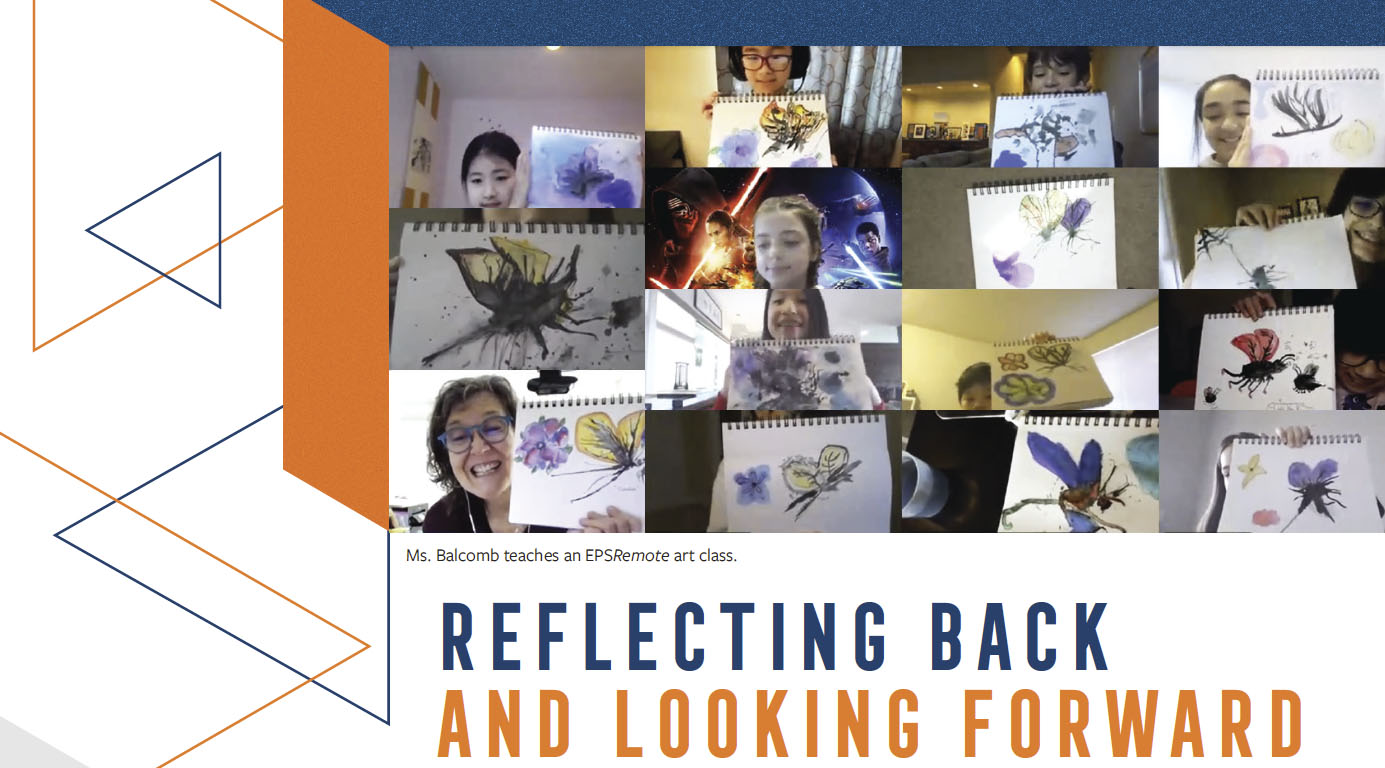
 By Jamie Andrus, Learning Support Coordinator
By Jamie Andrus, Learning Support Coordinator
While we often hear that individuals learn differently, this is somewhat misleading. Current research in the field of learning science demonstrates that strategies such as retrieval practice and spaced practice improve learning outcomes for all, whereas teaching to students’ preferred learning styles does not. However, schools are not laboratories, and our students are not learning in a vacuum. There are differences in temperament and attitude as well as social factors that impact student learning, and never has this been clearer than during this past year.
Our primary goal in Learning Support is to help students uncover obstacles to their learning and mitigate them as much as possible. For many students, remote learning in and of itself was a barrier. Students could not access teachers in the ways they were used to, being on camera was intimidating, and we all experienced intermittent technology challenges. However, for others, learning from home reduced stress, allowed for better sleep, and minimized distractions. Observing the struggles and successes of our students this year has led the Learning Support team to reflect on the following question: How do we work to create a school environment that meets the needs of all students?
While we do not have all the answers, we can turn to educational frameworks like Universal Design for Learning (UDL). Based on scientific study into how humans learn, UDL offers suggestions for strategies that make learning more inclusive. The principles of UDL reinforce that providing students with options improves engagement and increases knowledge. Striking the right balance between allowing for student voice and choice while promoting growth through meaningful academic challenges is not easy, but it is a worthwhile goal to pursue. Teaching through a pandemic has reiterated the importance of making Learning Support accessible and relevant to a greater number of students. By encouraging student reflection into their learning practices and bringing practical, evidence-based teaching strategies to our faculty, we hope to continue to grow our program into one that offers robust support for the entire EPS community.
 By Burton Barrager, Scientific Thinking Faculty
By Burton Barrager, Scientific Thinking Faculty
I was asked to write a reflection about the work the Science Discipline accomplished over the 2020-2021 school year while being remote, and what of those efforts we will be keeping as we move forward into the 2021-2022 school year. I feel that most of us, in all academic disciplines, have longed for a return to normal, to the way things were. However, I also believe that we as a community know that things will never completely go back to the way they were. Furthermore, as educators, we are constantly on the lookout for better ways, new ideas, and creative opportunities to effectively engage our students and encourage their academic growth.
After the fateful March 2, 2020 send-off and following educational triage of learning to do remote instruction that spring, the Science Discipline pursued various opportunities over the summer and 2020-2021 school year to increase our knowledge and skills in technology, as well as science-specific, remote teaching methodology. These pursuits included YouTube tutorials, identification and self-teaching of new apps and programs, professional university research, working closely with our highly competent and gracious technology team, tutoring and being tutored by colleagues, and participation in webinars facilitated by such organizations as the King County Green Schools Program and the National Science Teacher Association. The results, from my perspective, were nothing short of phenomenal. Over the course of the remote school year, I witnessed:
- rethinking and redesign of projects such as the sixth-grade Rube Goldberg and seventh-grade Cell Analogy that were implemented completely at home, then shared electronically with other students and teachers
- live-streamed teacher dissections and stream ecology work to students at home
- demonstrations conducted live using the new classroom cameras and audio gear
- teacher-created science kits for students so they could perform guided and independent investigations and experiments at home
- integration of new apps and software programs for simulations, presentations, and student participation
- complex science experiments recorded by teachers for students
- students conducting animal and plant studies/observations on pets, plants, and wildlife near their home
- student-designed and executed home experiments
- student-designed and teacher-executed experiments using school science materials and equipment
I full-heartedly feel that science is better taught and experienced through in-person collaboration, experimentation, and investigation…but, we now have a whole new set of pedagogical tools and equipment at our disposal to integrate into what we were successfully doing in the before times. What new methods have we learned? What new technologies will we want to keep using? What new methods and technologies are we continuing to be exposed to and pushing to improve? What skills have students lost and will need to be taught/reviewed this school year? These are questions that we continue to discuss in the Science Discipline.
Scientists know that the only constant is change, and this new school year will be no exception. Every academic discipline will continue to strive to create a quality student experience, and each teacher will be testing out new methods and technologies learned during remote and integrating them into what we used to do. This will look different from teacher to teacher and from discipline to discipline. I cannot say exactly what we are going to keep from remote instruction in the Science Discipline, but I know it will be different from what we have done. I, for one, am excited to be a part of the discussion, be a witness to the evolution of our teaching, and integrating new skills, equipment, and methodologies into my own science classes. In this, things have stayed the same—as teachers we constantly adapt and change so as to improve education for all of our students.
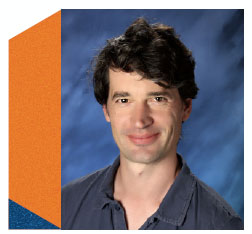 By Jonathan Briggs, Director of Strategy, Technology, and Innovation
By Jonathan Briggs, Director of Strategy, Technology, and Innovation
Depending on the course, the Technology Discipline responded to remote teaching in a variety of ways depending on the problem we were trying to solve. In the coding and web design realm, the medium lends itself well to instruction and producing work, but we found it lacking in terms of helping students debug their code and web pages. A variety of efforts were employed from private messaging, to Teams channels dedicated to help on homework and projects, to individual check-ins. While we are looking forward to being able to wander the room and assist, we plan to increase the ways in which students have access to debugging help (in particular with peers and asynchronously) moving forward.
Physical Meets Digital and Make classes offered unique challenges as all our tools and materials were not available to students. We focused on material scavenger hunts and low fidelity prototyping with success in addition to sending electronics kits home with students. Physical Meets Digital also added some circuit simulation steps, initially, to communicate student designs digitally. Decoupling the design of a circuit from the physical building of it offered a more successful experience for students as they built with confidence that their circuit had already been demonstrated to work. All of these practices will continue into the future as enhancements.
Rising to the challenge of teaching remote brought us and our students into uncharted territory. We look forward to seeing which techniques stick over the coming years and are excited to take advantage of our students’ enhanced ability to collaborate on projects over Teams and learn to work asynchronously. As we return to in-person school in the current school year, we will still have the capacity to employ our remote techniques where appropriate, leveling up the experience of students with the best of both worlds.
 By Ginger Ellingson, Director of Fine and Performing Arts
By Ginger Ellingson, Director of Fine and Performing Arts
Throughout EPSRemote, the Fine & Performing Arts faculty grounded remote instruction with the same practices that guide art classes in person: Create, Connect, Respond, and Perform/Present. While creating art remained the same for the most part, how we connected, responded, presented, and performed necessitated new methods. We reimagined tried-and-true practices and, most importantly, connected a wide network of people and places in ways that exceeded the limits of inperson instruction.
As galleries, theatres, and concert halls closed around the globe, the Arts Discipline saw an opportunity to learn from institutions and artists who found new ways of sharing their work. The Visual Arts faculty organized virtual tours of museums and art collections and hosted professionals in class. The Technical Theatre faculty implemented new production techniques and streaming platforms to allow connection with audiences far afield. For the first time, grandparents abroad attended the school play virtually! The Theatre faculty hosted professional actors, playwrights, and a casting agent in classes and rehearsals. Music classes incorporated elements of recording, editing, and producing in a digital audio workstation, creating shareable artifacts of student work (which had never resulted from our previous in-person performances).
Although we remained distanced from one another in the physical world, our virtual world became smaller and more inclusive. Dr. Ed Castro also reflected that, “Through this remote experience, we all came out the other end with sharper tools and wider fields of vision toward education.” While we are eager to return to an in-person experience for the 2021-2022 school year, we remain committed to continuing the methods that brought the world to our classes and our classes to wider audiences across the world.
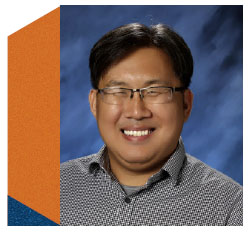 By Wen Yu Ho, Social Science Faculty
By Wen Yu Ho, Social Science Faculty
As we emerge from a very long and dark tunnel to what seems to be a new “normal,” it seems apt to look back at the past four trimesters of remote instruction and reflect on what lessons we will bring out of this, at times challenging, experience, and how that will shape instruction in the Social Science Discipline going forward.
First, at the risk of repeating myself from when I last wrote for Inspire, many of the technological tools that we utilized are here to stay, primarily Microsoft Teams. While the balance between communicating via email and via Teams remains to be fully worked out, countless discussions, presentations, and other major assessments have been successfully carried out over Teams. Indeed, some assignments, such as the tenthgrade Model UN final for English and history, have already enjoyed two iterations on Teams. The chat feature on Teams has repeatedly proven invaluable in allowing for increased and more sustained participation, including the ability to easily circle back to a previous point of discussion, and will feature again in our classes as we attempt to shape a more equitable student experience for our neuro-diverse learning community.
Secondly, due to shorter class timings and a recognition that remote instruction was a more taxing experience for all, the Discipline faced difficult pedagogical choices on a regular basis during the 2020-2021 school year, with the curricular content having to be slightly scaled back. But, when looking back at the year as a whole, an end-of-year survey indicated that the vast majority of faculty felt that they were able to deliver a quality of instruction that was comparable to what they had done pre-pandemic. Heartened by this validation, the Discipline seeks to continue to refine our courses on a similar mantra as we adjust once more coming out of remote, aiming to make our teaching even clearer, more deliberate, and more impactful.
 By Dr. Randy Reina, Mathematics Faculty
By Dr. Randy Reina, Mathematics Faculty
THE EPS VISION STATEMENT, “Inspire students to create a better world,” is a goal we continually strive toward. The mathematics courses at EPS contribute to the effort by posing novel problems that require students to apply the concepts and skills they learn to new situations. Through small group work, and by posing problems that invite investigation and debate, students come to a deeper understanding of the concept while also building creativity, critical thinking, and community awareness.
Too often, mathematics instruction emphasizes the skills and routines to the detriment of a deep understanding of the concepts and without allowing the time for thoughtful application. A focus on skills means you can “cover the material” at a rapid pace, but doing so risks reducing math to a series of formulas and known routines. Getting to a deeper understanding requires an investment in time and ongoing practice communicating mathematical ideas. Focusing on skills is efficient, but not sufficient.
To ensure a broad and deep experience, mathematics courses at EPS use a balance of teacher-directed and inquiry-based instructional approaches. Teacher-directed approaches are efficient and are often used to teach the skills. In addition, skills can be learned individually and are often “engineered” into a software learning system. (We use the ALEKS system.) On the other hand, inquiry-based activities, such as presenting a novel problem, requires an investment in class time to allow students to reflect, consider multiple approaches, and communicate their thinking with one another.
Solving novel problems in a small group setting takes practice. As students move through their EPS careers, they gain more experience tackling the unknown. In turn, the higher-level mathematics courses place more emphasis on these inquiry-based instructional approaches. After all, the most interesting problems in life are not the ones we already know how to solve!
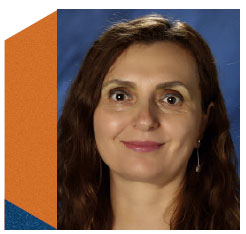 By Josefa Ruiz, Spanish Faculty
By Josefa Ruiz, Spanish Faculty
How does it look and feel to take Spanish at EPS? Interaction has always been the number one priority during class time.
In our pre-pandemic experience, using our spaces creatively was key in keeping students continuously active and engaged. Students used to spend a considerable amount of time talking, singing, acting, moving, playing games, and joking. They were using the Spanish language without even realizing it and—for most of the time—without a computer in front of them.
Moving to the remote model meant that everyone was in different spaces and in front of a computer. Students were behind a camera which was hard to keep on and we all discovered the silent pauses that no one wanted to break after each question.
To face the changes, we got in the “flexible” mood and focused on our core principles. We believe that learning a language should be a playful and fun experience that helps to create a strong community where kids communicate and interact positively and confidently. Our goal is to provide the tools for this experience to happen, regardless of if we are in person, remote, or hybrid.
A good example of this is the use of music and games in our classes. At first, we thought our classes might need to play less as we adapted to remote learning. However, we quickly realized that games and music are essential in the creation of the culture needed for students to be confident and open. As a sign of the importance of play in our classes, the Spanish Discipline met with the sole purpose of introducing one another to the games we had invented or adapted for Teams. We spent an afternoon playing modified versions of musical chairs, Taboo, Pictionary, and other games—sharing suggestions and ideas to make them run as smoothly as possible using the Teams channels, chat, together mode, and other available resources. (For example, it has been impressive to get the sixth graders to play musical chairs in the hybrid model!).
In general, it has been a continual process of experimentation with different activities, group sizes, methods of providing instruction, student leadership roles, and more. Our continuous collaboration has allowed Spanish teachers to return to our own classrooms better equipped to be effective in the delivery of the material and, at the same time, to keep our sessions light-hearted and as celebratory as possible, thus keeping intact one of the most important aspects of the experience of learning Spanish at EPS: fun.
As language learners, the benefits of in-person interactions cannot be substituted by interactions through a screen. However, the proliferation and reliability of the technology to perform remote learning across the globe has provided us the opportunity to invite into our classrooms people from other schools and organizations, with whom we can do activities together regardless of where they are in the world.
In Advanced Spanish Language class, students spent three weeks interacting with a team of community organizers on the ground in the Ecuadorian Amazon, learning about deforestation and several different strategies for mitigating its harmful effects. In Advanced Spanish – Literature, Alexandra Diaz, author of El único destino, the book that students were reading, visited the class on two separate occasions to field questions from the students about the book, her writing, and translation process. She even provided individualized feedback for every student who shared their project with her. In both experiences, students’ confidence grew immensely from seeing how meaningfully they were able to dialogue with the volunteers and with the book’s author. This is something that we definitely want to keep as we move forward.
These have been challenging times that have required a big effort of adaptation from both teachers and students. We want to thank our students for also doing their part. Great things have been happening in our classes and students have learned a lot! Comparing our curriculum mapping of February 2020 to June 2021, only a few concepts have been revised in each of our classes. Most importantly, although our classrooms have looked different, the experience has still felt similar.
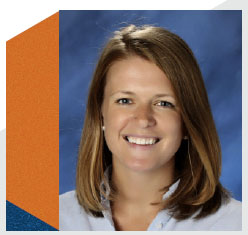 By Verity Sayles, English Faculty
By Verity Sayles, English Faculty
If you had to survive a night in your backyard, how would you do it? If social media were around during China’s Cultural Revolution, how would it mobilize the youth? Where do cultural elements of the 1950s show up today? How can we model a United Nations summit at EPS? How might a dystopian story, set in the future, shed light on some of the issues in today’s world? What is our opinion? How can we communicate it effectively?
In the English Discipline, we love to ask questions and have students problem solve through projects. Projects are a chance for students to get their hands dirty and work in a medium of their choice as a form of communication. The tenth graders hand-made personal shields with their own crest in Medieval Literature—communicating their identity through art. The sixth graders recorded spooky stories in Padlet for Halloween—communicating suspense and plot out loud. The twelfth graders in Literature and Nature were asked to keep a nature journal and identify local plant species—communicating their individual relationship to space. In the spring, the tenth-grade Model UN project took place at the Annex. The entire class broke into rooms based on the topics they had chosen: public health, the environment, or human rights. Here, they played a delegate from a non-US country, communicated a speech to their peers, and had to work together to come to a consensus on the pressing questions of 2021. Project-based learning has been a way to navigate a land of remote instruction, offering a chance to unplug, practice new forms of communication, and ultimately ask a lot of questions.
Inquiry-based learning in the Humanities now feels more pertinent than ever. This past year in remote instruction, we asked students to grapple with the questions they were facing each day. In times of uncertainty, looking to models of how figures in fiction have solved problems has unlocked many of our online discussions. Characters and heroes in the stories we read are never perfect, and they often face a rapidly changing world—whether real or imagined. Sitting around the Harkness Table, talking about the most recent reading from a book and asking questions is a feature you will find in most English courses at EPS. This last year we sought to recreate this mode of uncovering and unlocking curiosity by also using the chat feature in Teams. Our teenage students, accustomed to working in such a mode in other online forums, took to the chat with enthusiasm. Using the chat feature, typing out a response, liking other responses, adding in a GIF or two, was another way the English classroom responded to issues of the time. What do I think about this? and How do I communicate my ideas effectively? are two questions that will remain consistent in the English classroom. Although projects may be more digital, and student ideas might contain emojis in an online chat, the central inquiry of our study stays the same—a comforting thought in an ever-evolving world.

